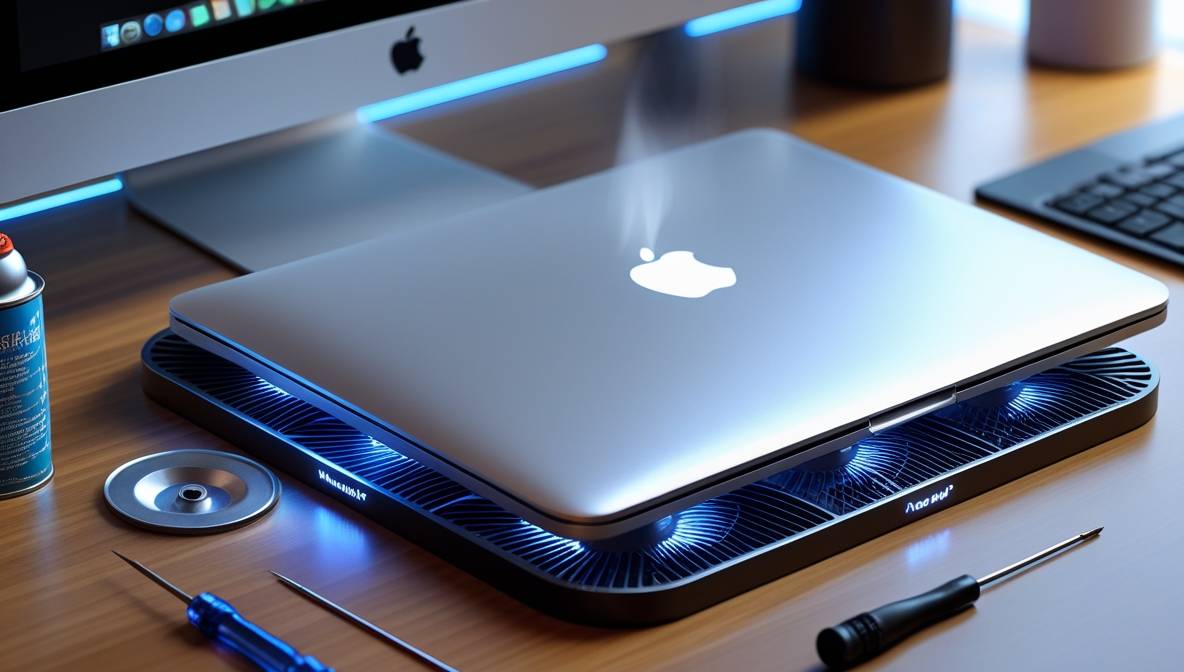MacBook overheating is a common issue affecting performance and longevity. Modern laptops, including MacBook Pro and MacBook Air models, generate significant heat during intensive tasks. Left unresolved, excessive temperatures may lead to hardware failure, reduced battery life, or sudden shutdowns. This guide explores root causes, immediate fixes, and long-term prevention strategies.
Why MacBooks Overheat: Primary Causes
1. High CPU/GPU Utilization
Resource-heavy applications like video editors, 3D rendering tools, or games strain processors. macOS Activity Monitor (Utilities > Activity Monitor) identifies apps consuming excessive CPU or energy.
2. Dust Accumulation in Vents
Dust blocks airflow through cooling vents and fans. Older models with removable bottoms collect debris faster.
3. Outdated macOS or Firmware
Software updates often include thermal management optimizations. Delayed updates may cause compatibility issues or inefficient power distribution.
4. Faulty Cooling Components
Damaged fans, degraded thermal paste, or heat sink misalignment reduce heat dissipation efficiency.
5. Ambient Temperature and Usage Environment
Using MacBooks on beds, carpets, or laps obstructs airflow. Apple recommends ambient temperatures below 95°F (35°C).
Immediate Fixes for MacBook Overheating
Close Resource-Intensive Applications
| Application Type | CPU Usage (%) | Alternative Solutions |
|---|---|---|
| Video Editing | 80–120% | Use proxy files or lower resolution |
| Gaming | 90–150% | Reduce graphics settings |
| Browser Tabs | 50–70% | Use lightweight browsers like Safari |
Access Activity Monitor to force-quit unresponsive apps.
Improve Airflow
- Elevate the MacBook using a stand or book.
- Avoid soft surfaces; use desks or cooling pads with built-in fans.
- Clean vents using compressed air (hold fans to prevent spin damage).
Reset SMC and NVRAM
- System Management Controller (SMC) Reset:
- Intel MacBooks: Shut down, press Shift+Control+Option+Power for 10 seconds.
- Apple Silicon: Shut down, wait 10 seconds, restart.
- NVRAM Reset:
- Restart, hold Command+Option+P+R until the Apple logo appears twice.
Long-Term Prevention Strategies
Regular Maintenance Schedule
| Task | Frequency | Tools Required |
|---|---|---|
| Vent Cleaning | Every 3 months | Compressed air, brush |
| Software Updates | Monthly | macOS System Preferences |
| Thermal Paste Replacement | Every 2–3 years | Screwdriver, thermal paste |
Optimize macOS Settings
- Enable Low Power Mode (System Settings > Battery) to reduce CPU clock speeds.
- Disable unnecessary startup items (System Settings > General > Login Items).
- Use Turbo Boost Switcher to limit CPU turbo boosting.
Hardware Upgrades
- Replace mechanical hard drives with SSDs to reduce heat.
- Upgrade RAM to minimize swap memory usage.
Advanced Troubleshooting
Diagnose Faulty Fans
- Install Macs Fan Control to manually adjust fan speeds.
- Listen for irregular noises (grinding, clicking) indicating bearing wear.
Thermal Paste Replacement
- Power off and disconnect the battery.
- Remove heat sinks, clean old paste with isopropyl alcohol.
- Apply a rice-sized amount of high-quality paste (Arctic MX-4 or Thermal Grizzly).
Professional Repairs
For persistent overheating, consult Apple Authorized Service Providers. Common repairs include:
- Fan replacements (50–50–150)
- Logic board diagnostics (99–99–299)
FAQs
Q: Is 80°C safe for a MacBook?
A: Yes. Most CPUs throttle at 100°C, but sustained temperatures above 90°C risk component damage.
Q: Can cooling pads damage MacBooks?
A: No. Quality pads with USB-powered fans enhance airflow without electrical interference.
Q: Does external monitor use increase heat?
A: Yes. Higher-resolution displays and GPU-intensive tasks raise temperatures.

